- Mold Basics
- Mold Inspection
- Mold Remediation
- Smart Nano Purfication
- Our Company
- Insurances
- Types of Projects
- Business & Commercial
What is the difference between mold and mildew?
Understanding the Difference Between Mold and Mildew
When it comes to home maintenance, many homeowners confuse mold and mildew. While they may appear similar, they are actually quite different and require different approaches for removal.
What is Mildew?
Mildew is a type of fungus that is usually white and powdery in appearance. It thrives in damp or humid environments, such as bathroom walls, shower curtains, or windowsills. Mildew can be easily cleaned with simple household products and generally doesn’t pose a major health risk.
What is Mold?
Mold is a more dangerous fungus and can appear in various colors, including black, green, or brown. It tends to grow in areas with excess moisture, such as basements, attics, or places affected by water damage. Mold removal is more complex than mildew removal and can pose serious health risks, especially if left untreated.
Mold Can Grow in Hidden Areas
One misconception about mold is that it only grows in visible, wet areas. In reality, mold can hide in places like behind walls, under carpets, and within HVAC systems. This makes it crucial to address potential mold problems immediately, even if the signs aren’t obvious.
How to Handle Mold in Your Home
If you suspect mold in your home, contact a professional mold remediation company. Our team has the expertise to safely identify and remove mold, protecting your home and family’s health.
Remember, understanding the difference between mold and mildew is just the first step. Acting quickly to address mold problems will safeguard your health and property.
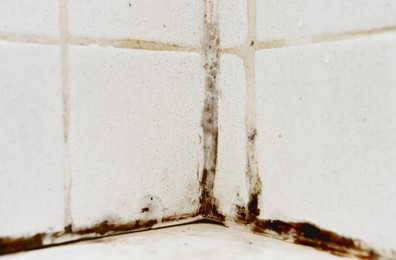
What is the black stuff in my shower?
One of the most common questions we get asked is about the black stuff that people see in their showers. It’s essential to understand that the black color around the grout lines in the shower is mold and not mildew, as some might think.
Mildew is a type of fungus, a cousin of mold, and it’s always white and powdery in appearance. On the other hand, mold can appear in different colors, including black, green, brown, and sometimes even orange. When mold is present in the house, it looks for high moisture areas to grow, and the shower is often the perfect environment for it to thrive.
Hot showers create a lot of humidity in the bathroom, and since the shower takes a long time to dry out completely, it’s a prime location for mold growth. It’s important to understand that if you see mold growing in your shower, it’s an indicator that you might have a mold problem throughout your home.
Mold spores are microscopic and can travel through the air, making it easy for them to spread throughout your house. When left untreated, mold can cause significant damage to your property and even affect your health. Exposure to mold can lead to allergic reactions, respiratory problems, and other health issues.
That’s why it’s crucial to address any mold growth in your home immediately and get a professional to take a look at it. A mold remediation specialist can determine the extent of the mold problem and provide an effective solution to eradicate it. They will also identify the source of the moisture problem and recommend ways to prevent mold growth in the future.
In conclusion, the black stuff that you see in your shower is mold, and it’s a sign that you might have a mold problem throughout your home. If you see mold growing in your shower, don’t ignore it. Call a mold remediation professional to assess the situation and provide a solution to eradicate the mold and prevent it from coming back. Your health and your home’s safety depend on it.

What causes mold?
I can tell you that mold is a common problem in many homes. Not only is it unsightly, but it can also cause health problems, especially for people with respiratory issues like asthma or allergies. The key to preventing mold growth is to understand what causes it and how to address it.
As mentioned, mold growth is triggered by moisture issues. This can be caused by a variety of factors, including leaky pipes, poor ventilation, high humidity levels, and water damage from floods or heavy rains. In some cases, even small amounts of moisture can lead to mold growth, so it’s important to address any signs of water damage or excess moisture right away.
To prevent mold growth in your home, there are several steps you can take. First, be sure to repair any leaks or water damage as soon as possible. This will help prevent moisture from accumulating and creating the ideal conditions for mold growth. You should also ensure that your home has proper ventilation, especially in areas like bathrooms, kitchens, and laundry rooms.
In addition to these preventative measures, it’s also important to regularly inspect your home for signs of mold growth. Look for visible mold, as well as musty odors, which can be a sign of hidden mold growth. If you do find mold in your home, it’s important to address it right away to prevent it from spreading and causing further damage.
When it comes to addressing mold growth, it’s best to work with a professional mold remediation expert. These professionals have the tools and expertise needed to safely remove mold and prevent it from returning. They can also help identify the source of the moisture issues in your home and recommend solutions to address them.
In summary, mold growth is caused by moisture issues in your home. To prevent mold growth, it’s important to address any leaks or water damage right away, ensure proper ventilation, and regularly inspect your home for signs of mold growth. If you do find mold in your home, work with a professional mold remediation expert to safely and effectively remove it.
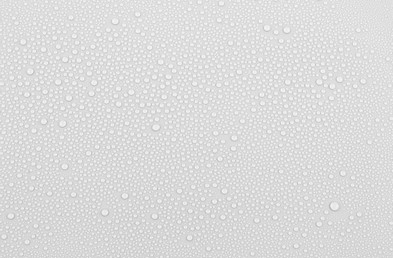
What are mold spores?
I can attest to the fact that mold spores are indeed the seeds of mold. These minuscule particles can be found virtually everywhere, including in the air we breathe. They are so small that they are invisible to the naked eye, yet they can cause significant problems if they land on wet or damp surfaces and start to grow and multiply.
Mold spores thrive in warm and humid environments, making them more prevalent in areas with poor ventilation, moisture problems, or high humidity levels. Once these spores find a suitable surface to grow on, they will begin to form a network of interconnected filaments called hyphae. These hyphae can quickly spread and form colonies of mold, which can be harmful to your health and your home.
It’s crucial to identify the early signs of mold growth and take swift action to prevent the problem from getting worse. Some common indicators of mold growth include musty odors, discoloration on walls or ceilings, and the presence of black or green spots. If you notice any of these signs, it’s essential to act fast and seek the help of a professional mold remediation expert.
Preventing mold growth is the best approach, and this can be achieved by keeping your home dry and well-ventilated. Fix any leaks or water damage immediately and ensure that your home’s humidity levels are within a healthy range. It’s also essential to clean and maintain your HVAC system regularly to prevent the buildup of mold and other allergens.
In conclusion, mold spores are the seeds of mold, and they can cause significant problems if left unchecked. If you suspect that you have a mold problem in your home, it’s essential to act quickly and seek the help of a professional mold remediation expert. With the right knowledge and preventative measures, you can keep your home healthy and free of mold.

Is that just a spot of mold on my wall?
I have seen many cases where homeowners have ignored a small spot of mold on their walls, only to discover that it’s actually a much bigger problem than they thought. The truth is that when a mold spore begins to grow, it’s almost impossible to see with the naked eye because it’s microscopic in size. By the time you notice a spot on the wall, it’s not just a single mold plant, it’s actually a whole forest of them!
If you were to take a microscope and take a closer look, you’d see that mold looks like a tiny fern tree, with thousands of them all over the place. These fern-like structures are called hyphae, and they grow very quickly. In fact, mold can start growing in as little as 24 to 48 hours if the conditions are right.
So, if you see a spot of mold on your wall, it’s important to take action immediately. Don’t make the mistake of thinking it’s just a small problem that you can deal with later. Mold can spread quickly and cause serious health problems, especially for those with allergies or respiratory problems.
If you’re not sure if the spot on your wall is mold, there are a few signs you can look for. Mold often has a musty odor, and it may appear as a discolored or fuzzy patch on the wall. If you see these signs, it’s important to take action right away.
The first step in dealing with mold is to identify the source of the problem. Mold thrives in damp and humid environments, so it’s important to address any sources of moisture in your home. This could be anything from a leaky pipe to poor ventilation in your bathroom. Once the source of the problem is identified and fixed, the mold can be removed.
It’s important to note that mold removal is not a DIY project. Mold can be dangerous to your health, and improper removal can actually make the problem worse. That’s why it’s important to call in a professional mold remediation company to handle the problem for you.
In conclusion, if you see a spot of mold on your wall, don’t ignore it. It’s important to take action immediately to prevent the problem from becoming much bigger. Look for signs of mold growth, and call in a professional mold remediation company to handle the problem for you. Remember, mold can be a serious health hazard, so don’t take any chances when it comes to your safety and well-being.
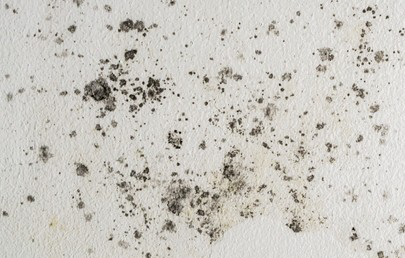
Should I get my air ducts cleaned?
We often get asked whether air duct cleaning is necessary, especially after a mold remediation process. The short answer is that it depends on the condition of your AC system and ducts.
If you’ve had a Nano Purification process done, which is a highly effective and comprehensive mold remediation process, it’s typically not necessary to do a duct cleaning. This is because the Nano Purification process takes care of any mold or contamination present in the entire AC system, including the ductwork.
However, if your AC system and ducts were already dirty before the mold issue was discovered, it might be a good idea to get your ducts cleaned after the mold remediation process has been completed. This is because dirt and debris in your ducts can impede airflow, reduce the efficiency of your HVAC system, and negatively impact indoor air quality.
If you’re specifically trying to get your ducts cleaned to handle a mold problem, it’s highly recommended that you seek professional remediation services. While some A/C technicians may tell you that they can spray something in there to encapsulate the mold, the truth is that this is only a temporary solution. Encapsulating mold will only cover it up and prevent it from releasing spores temporarily. However, it’s only a matter of time before the mold comes right through that encapsulation layer. It’s similar to how painting over mold will only lead to it bleeding through the paint eventually.
Professional mold remediation services will not only remove the visible mold but also identify the source of the problem and fix it. Mold remediation specialists use specialized equipment to clean your ducts thoroughly and eliminate any remaining mold spores. They also use high-efficiency particulate air (HEPA) filters to capture airborne mold spores and prevent them from spreading throughout your home.
In conclusion, if you’re dealing with a mold problem in your AC system and ducts, it’s best to seek professional mold remediation services. A professional mold remediation company can provide a comprehensive solution that includes removing the mold and cleaning your ducts to ensure that your indoor air quality is restored.
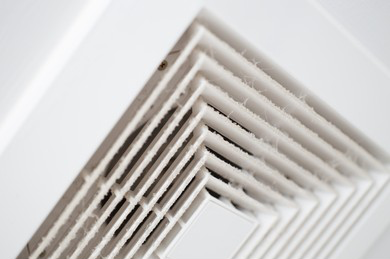
Is the mold that I have dangerous?
Mold can be a serious problem in any home or building, and it’s natural to wonder whether the mold you have is dangerous or not. As a mold remediation expert, I can tell you that any type of mold has the potential to be harmful to human health.
Mold is a type of fungus that grows in damp, humid environments. It releases spores into the air that can cause respiratory problems and other health issues. Mold can also produce mycotoxins, which are harmful chemicals that can cause a range of health problems. While some molds are known to always produce mycotoxins, any type of mold that shows up in a test can potentially be harmful.
The infamous “black mold” is one of the most dangerous types of mold. Stachybotrys chartarum, commonly known as black mold, produces mycotoxins that can cause respiratory problems, headaches, and other health issues. If you suspect that you have black mold in your home, it’s important to contact a mold remediation expert immediately.
However, it’s important to note that not all mold is visible to the naked eye. Some types of mold can grow behind walls, under carpets, and in other hidden places. These types of mold can be just as dangerous as visible mold. If you suspect that you have mold in your home, it’s important to contact a mold remediation expert to perform a test and determine the extent of the problem.
Taking precautions to protect yourself and your family’s health is essential when dealing with mold. If you are experiencing any respiratory problems, headaches, or other health issues, it’s important to seek medical attention. In addition, it’s important to wear protective gear when cleaning up mold, including gloves, a mask, and goggles.
If you do have mold in your home, it’s important to have it removed as soon as possible. Mold remediation experts can safely and effectively remove mold from your home and prevent it from coming back. By taking action quickly, you can protect your health and prevent further damage to your home.
In conclusion, any type of mold has the potential to be harmful to human health. It’s important to take all types of mold seriously and take necessary precautions to protect yourself and your family’s health. If you suspect that you have mold in your home, don’t hesitate to contact a mold remediation expert to have it removed safely and effectively.
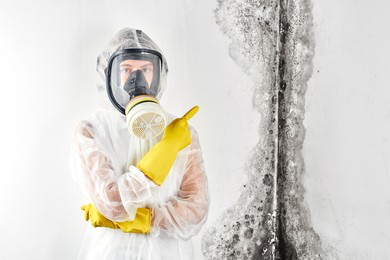
How fast does mold grow?
The speed at which mold grows depends on a variety of factors, including the type of mold, the surface it’s growing on, and the conditions of the environment. But generally, mold growth is a process that can happen in as little as a day or two.
The first stage of mold growth is spore colonization, which occurs when mold spores land on a surface that has enough moisture and organic material to support growth. Once the spores have colonized, they’ll start to spread and develop into a visible colony of mold.
The amount of time it takes for mold to grow into a visible colony can vary widely depending on the conditions of the environment. Factors such as temperature, humidity, and ventilation all play a role in how quickly mold will grow. Warmer temperatures and higher humidity levels can accelerate mold growth, while lower temperatures and drier environments can slow it down.
It’s important to note that while mold growth can happen quickly, it can also be difficult to detect. Often, by the time you notice mold growth, it has already become a significant problem. That’s why it’s crucial to be proactive in preventing mold growth by addressing moisture issues as soon as they arise.
If you do discover mold growth in your home or business, it’s essential to take action right away. Mold can cause a range of health problems, including respiratory issues, allergies, and even neurological problems in some cases. Mold remediation experts can help identify the source of the moisture problem, remove the mold safely and effectively, and help prevent future growth.
In conclusion, mold can grow at a very rapid pace, and it’s important to act quickly to address any moisture issues to prevent it from taking hold. If you suspect mold growth in your home or business, it’s always best to contact a professional for assistance. With their expertise and experience, they can help ensure that your property is safe and free from harmful mold growth
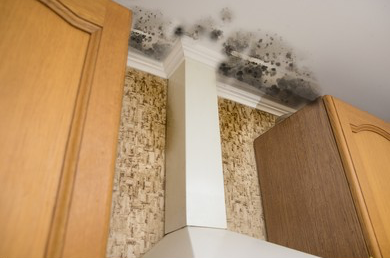
Can’t I just clean the mold myself?
Mold is a very serious issue that should be handled with care, and attempting to clean it yourself is not recommended. There are several reasons for this, including the fact that mold is not just a surface problem but an airborne issue. When you disturb mold, it releases spores and toxins into the air, which can lead to health problems if inhaled. In addition, attempting to clean mold without proper training and equipment can actually make the problem worse by spreading it to other areas of your home.
Professionals in the mold remediation industry are trained to handle mold in a safe and effective manner. They use specialized equipment, such as commercial air purifiers, to contain and remove mold from your home. They also use containment barriers to prevent mold spores from spreading to other areas of your home.
When you attempt to clean mold yourself, you may not be using the correct cleaning solutions or techniques, which can result in the mold returning. Mold can also grow back quickly if it is not properly removed, which is why it is essential to hire a professional mold remediation expert.
In addition, mold can cause serious health problems, particularly for those with allergies or respiratory issues. Attempting to clean mold yourself can expose you to higher levels of mold spores, which can exacerbate these health problems. Professional mold remediation experts are trained to handle mold in a safe manner to minimize exposure to mold spores and toxins.
In summary, attempting to clean mold yourself is not recommended. Mold is an airborne issue that requires specialized equipment and training to properly remove. It can also pose a significant health risk if not handled correctly. Hiring a professional mold remediation expert is the best way to ensure that your home is free of mold and that you and your family are safe from its harmful effects.
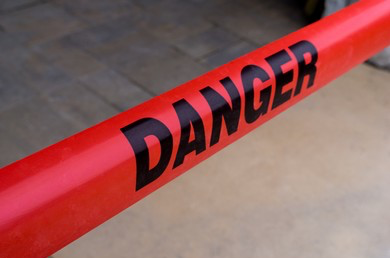
Can I Smell Mold?
As a mold remediation experts, We often get asked the question, “Can I smell mold?” and the answer is not as simple as a yes or no. While mold does release chemicals that can have a distinct odor, not all molds produce an odor that is easily detectable.
The smell associated with mold growth is actually the result of the chemicals released by the mold, rather than the mold itself. Some of these chemicals, such as *Geosmin, are responsible for the musty smell commonly associated with mold growth. However, not all molds produce Geosmin, and some molds may release chemicals that have no discernible odor.
While the smell of mold can be a good indication that you have a mold problem in your home, it is not the only sign of mold growth. Other signs include visible mold growth, water stains, and discoloration or staining on walls or ceilings.
It’s important to address mold growth in your home as soon as possible, regardless of whether or not you can smell mold. Mold can cause health problems, especially for those with allergies or respiratory issues, and can also lead to costly structural damage if left untreated.
If you suspect that you have mold growth in your home, it’s best to contact a professional mold remediation service. They can conduct a thorough inspection of your home and provide effective solutions to address the problem. Don’t wait until the problem becomes worse; act quickly to protect your health and your home.
*Geosmin is a naturally occurring organic compound that is responsible for the earthy and musty odor often associated with the smell of mold. It is produced by certain types of bacteria and fungi, including some species of mold, and can be found in soil, water, and air. Geosmin is known to be highly sensitive to human olfactory senses, which means that even very low concentrations of it can be detected by people. In the context of mold remediation, the presence of Geosmin can be a sign of mold growth and may indicate the need for further investigation and remediation.

How do I know mold won't come back?
Mold is a common problem that many homeowners face, and it can be frustrating to deal with. You might have had mold removed from your property, but how do you know it won’t come back? As a mold remediation experts, We can tell you that the key to preventing mold from coming back is addressing the underlying cause of the problem.
When we’re called in to treat a property, we start by conducting a thorough inspection to identify any moisture issues that could be contributing to mold growth. This could include anything from a leaky roof to a plumbing problem. Once we’ve identified the root cause of the mold problem, we work with our clients to fix it completely.
It’s important to understand that mold needs moisture to grow. If we don’t fix the underlying moisture problem, the mold will just come back again. That’s why we take a comprehensive approach to mold remediation. We don’t just remove the visible mold; we also address the underlying cause of the problem to ensure that the mold won’t return.
In addition to fixing the underlying problem, we also take steps to prevent future mold growth. This might include installing better ventilation or recommending regular maintenance to prevent moisture buildup. We also educate our clients on how to prevent mold growth in the future, such as by reducing humidity levels and fixing any water leaks as soon as they’re discovered.
At our company, we’re committed to making sure that our clients have a safe and healthy living environment. That’s why we always go the extra mile to ensure that once we’ve taken care of a mold problem, it won’t come back. We understand how frustrating it can be to deal with mold, and we’re here to help. When you work with us, you can trust that we’ll get the job done right and do our best to prevent mold from coming back in the future.
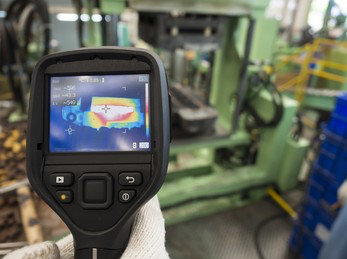
How does mold affect my health (the doctor says if have mold in my blood)?
We understand the serious health risks that mold exposure can cause. Mold can have a negative impact on your health in various ways, and it’s crucial to understand the potential health risks associated with mold exposure.
One of the most concerning things is when a doctor tells you that you have mold in your blood. This indicates that mold spores have entered your body and can cause a variety of health problems. Mold can enter the body through inhalation, ingestion, or skin contact.
When mold enters the body, it can cause a range of symptoms, including respiratory problems such as coughing, wheezing, and shortness of breath. Mold can also cause skin irritation and rashes, eye irritation, headaches, fatigue, and brain fog. Prolonged exposure to mold can lead to more serious health problems, such as allergic reactions and even permanent damage to the lungs.
It’s important to note that some people are more sensitive to mold than others, and individuals with pre-existing respiratory conditions, such as asthma, are particularly vulnerable. Children, the elderly, and individuals with weakened immune systems are also at a higher risk of health problems caused by mold exposure.
To prevent health problems caused by mold exposure, it’s essential to identify and eliminate mold in your home. This involves identifying the source of the mold and addressing any moisture problems. Mold remediation experts can help you assess the extent of the mold problem and safely remove it from your home.
In conclusion, mold can have a severe impact on your health, and it’s crucial to take mold exposure seriously. If you’re concerned about mold in your home or have been told by a doctor that you have mold in your blood, it’s important to seek professional help from mold remediation experts to address the problem and prevent any further health risks.
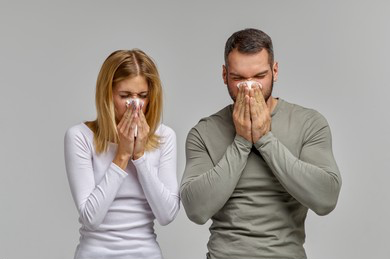
Why does an inspector test the air AND swab the mold?
Why Mold Inspections Include Air Sampling and Swab Testing
Mold is a common problem in many homes and can lead to serious health issues if not addressed properly. A professional mold inspection is essential to identify and treat mold growth in your home. During a mold inspection, inspectors use various methods, such as air sampling and swab testing, to detect and assess mold. But why are both air and swab tests important? Let’s break it down.
What is Air Sampling?
Air sampling is a common method used to detect mold growth in your home. Inspectors collect air samples from different rooms and test them for mold spores. Mold spores are tiny particles that float in the air, even in areas where mold growth is not visible. Air sampling is especially useful for identifying mold in hidden areas, such as behind walls or beneath floors.
What is Swab Testing?
Swab testing involves taking a sample from a specific surface suspected of mold contamination. Inspectors use a swab to collect the sample and send it to a lab for analysis. This helps to determine not only whether mold is present but also the specific type of mold affecting your home.
Why Test Both the Air and Surface?
Both air sampling and swab testing provide unique insights. Air sampling detects airborne mold spores, which may not be visible, while swab testing focuses on surface-level mold growth. Combining both methods gives the inspector a thorough understanding of the mold situation in your home.
Why Hire a Professional Mold Inspector?
If you suspect mold in your home, a professional mold inspector is crucial. They will use air sampling and swab testing to assess mold growth, ensuring that no mold problem goes unnoticed. By hiring an expert, you can safeguard your home and family from the risks of mold exposure.
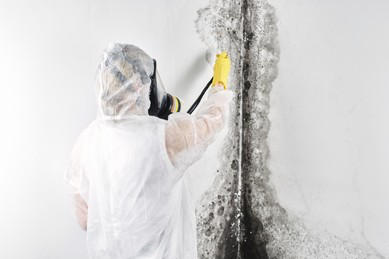
How much does a Mold Inspection cost?
Typically, most mold inspectors charge a base price of approximately $300 for a visual inspection and basic air samples. Additional charges of around $100 per air sample may apply if needed or requested. If you would like a comprehensive report with findings and a protocol (instructions for the remediation company on how to address the issue), the cost may increase by approximately $200 – $300, based on the size of your home.
Please note that if you choose us as your remediation company, a protocol may not be required, as we treat the entire space and do not need instructions on what to remove.

Can I rely on an in home test kit from the hardware store?
Mold can be a serious issue in any home, and it’s understandable to want to take matters into your own hands by using an in-home test kit from a hardware store. However, as mold remediation experts, we must caution against relying solely on these kits to determine if you have a mold problem in your home.
One common test that people use is the petri dish test. While this test can show you that there are things growing in the air, it is not an accurate indicator of whether or not you have a mold problem. This is because mold spores are *ubiquitous and can be found in the air at any time. Another in-home test kit is an air quality test, which is more accurate than the petri dish test, but it can still give a false negative, which means you may think you don’t have a mold problem when you actually do.
There are several factors to consider when testing for mold in your home, such as whether the mold is active and sporing when the test is being done, whether the air conditioning is running during testing, whether you want to swab surfaces for landed mold spores, and whether you are in the location where the mold source is the worst. You also need to do a sample outside to act as a standard for what should be inside. If you’re not experienced in mold remediation, it can be difficult to know which factors to consider and how to interpret the results.
It’s important to remember that a mold inspector is licensed and trained in this area. They have to do continuing education classes every couple of years to keep up with anything new in the field. There’s a reason why they are required to be licensed to tell you if you have a mold issue in your home. A professional mold inspection can give you a more accurate picture of whether or not you have a mold problem and the extent of the problem.
In conclusion, while in-home mold test kits may be tempting, they may not provide an accurate representation of whether or not you have a mold problem in your home. It’s best to get a professional mold inspection to ensure that any mold issues in your home are identified and addressed promptly. For more information on the signs of a mold problem in your home, please visit the Mold University page on our website.
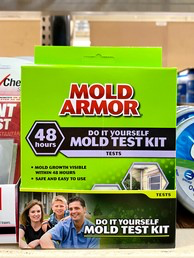
Do I need to get an inspection before getting remediation?
The answer is that it depends on your specific situation. Let’s dive deeper into this topic.
If You’re Already Aware of the Mold Problem
If you’re already aware that you have a mold problem in your home and you’ve decided to go with a mold remediation process that treats the whole house, such as Smart Nano Purification, then you won’t need to hire an inspector to come out and create a plan on how to fix the mold problem. In this case, the remediation process will take care of the mold problem without the need for an inspection.
If You’re Not Certain Whether or Not You Have a Mold Problem
If you’re not certain whether or not you have a mold problem, it’s a good idea to hire an inspector to come out and do some testing. This will help you determine if there is indeed a mold issue in your home. An inspector will use specialized equipment to test the air quality and surfaces in your home for mold spores.
If you do have a mold problem, the inspector will also provide a detailed report on the location, type, and extent of the mold growth. This report can be helpful in determining the best course of action for remediation.
If You’re Planning on Using the Traditional Tear-Out Demolition Method
If you know that you have a mold problem and you’re planning on using the traditional tear-out demolition method, then you will definitely need to hire an inspector. The inspector will create a protocol that the remediation company will follow to properly fix the mold problem.
The protocol will outline the exact steps that the remediation company needs to take to remove the mold safely and effectively. This is important because mold can spread quickly if not handled properly, leading to more damage and potentially higher costs.
Conclusion
In conclusion, whether or not you need a mold inspector before getting remediation really depends on your specific situation. If you’re already aware of the mold problem and are using a whole-house remediation process, an inspection may not be necessary. However, if you’re not certain whether or not you have a mold problem or are planning on using the traditional tear-out demolition method, hiring an inspector is a crucial step in the remediation process. We hope this guide has helped you determine whether an inspection is necessary for your situation.
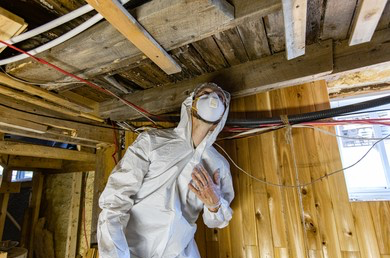
Does an inspector test after the job is done?
One of the most frequently asked questions we receive from our clients is whether an inspector tests after the job is done. The answer is a resounding yes. It is critical to verify the success of the remediation work and ensure that the mold situation has been completely handled.
At our company, we understand the importance of providing a safe environment for our clients, which is why we go the extra mile to bring in a third-party inspection company to test the area. These inspectors are certified professionals who specialize in mold remediation testing and are completely independent from our company.
By bringing in a third-party inspector, we can ensure that there is no conflict of interest and that the inspection results are completely unbiased. The inspector will perform a thorough examination of the area to ensure that there are no elevated mold levels in the home or office and that the air quality is up to par.
If the inspector does find elevated mold levels, we will take immediate corrective action to resolve the problem. We will not consider the job to be complete until the inspector has given us the green light.
In summary, we take the post-remediation testing process very seriously. It is our commitment to providing the highest quality of service and ensuring that our clients have a safe and healthy environment.
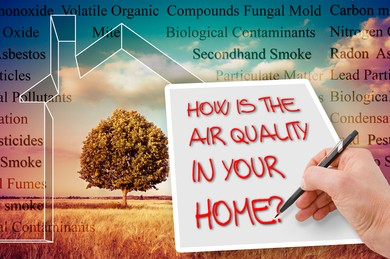
How do you verify the mold in my home is gone and it is safe in the place?
Mold can be a serious problem in homes and can pose health risks to occupants. As Mold Remediation experts, our top priority is ensuring that our clients’ homes are free of mold and safe to live in. So how can you be sure that the mold in your home is gone and it’s safe to stay there?
At Mold Experts, we have a rigorous testing process that we follow to verify that your home is free of mold. We take quality assurance samples right at the end of our treatment, as this is the best time to identify if there’s still a problem. When mold is disturbed, it sends out millions of spores to survive and grow somewhere else. If we didn’t address the mold issue, it would continue sporing, which would show up in the air quality samples.
We then send these samples to a third-party accredited lab for analysis. This is important because it ensures that the results are unbiased and accurate. Once the lab results come back, we review them, and if they look good, we have a third-party inspector come out to your home to do an inspection. The inspector also takes air quality samples and sends them to a third-party for analysis.
Once the inspector receives the samples back, if they look good, he issues a Clearance Report, indicating that there’s no longer a mold issue in your home. This report provides peace of mind to our clients that their home is safe to live in. We take this process seriously because we want to ensure that our clients are safe and healthy in their homes.
In addition to our testing process, we also provide our clients with recommendations to prevent mold growth in the future. This includes addressing any moisture issues in the home, improving ventilation, and regularly cleaning and maintaining the home.
In conclusion, at Mold Experts, we take mold remediation seriously and have a thorough testing process to verify that your home is free of mold and safe to live in. Our process involves taking quality assurance samples, sending them to a third-party accredited lab for analysis, having a third-party inspector come out to your home to do an inspection, and issuing a Clearance Report. We also provide recommendations to prevent mold growth in the future. You can rest assured that your home is now safe to live in.

Why would someone recommend demolition versus sterilization?
Why Demolition Isn’t Always the Best Solution for Environmental Remediation
Many companies still recommend demolition over sterilization for environmental remediation because it’s the traditional method they’re familiar with. They may not be aware of newer technologies like the Smart Nano Purification Process, which offers a non-invasive, cost-effective alternative. While this process requires specialized equipment and training, it is not as widely adopted in the industry yet.
Traditional Demolition vs. Smart Nano Purification
Demolition has been the standard for years in mold and environmental remediation. However, just like the early days of smartphones—once considered too complex—new technologies like Smart Nano Purification are now becoming more accessible. In the past, basic cell phones were the norm, but smartphones have now become standard, showcasing how new technology can eventually revolutionize industries.
Cost Considerations
The cost factor also plays a role in the preference for demolition. Traditional tear-out methods can be more profitable in the short term, but the Smart Nano Purification Process can be more cost-effective in the long run. While it may take more jobs to match the revenue from demolition, it provides a more sustainable solution without the need for costly rebuilding.
Why Choose Smart Nano Purification?
If you’re looking for a more efficient, non-invasive solution for environmental remediation, Smart Nano Purification offers a promising alternative. Unlike traditional methods, it eliminates the need for demolition, saving you time, money, and hassle.
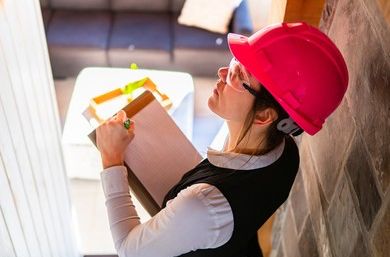
When should I resort to demolition type remediation?
The decision between demolition-style remediation and sterilization-style remediation often depends on the extent of damage to your walls, such as in the case of a severe flood where the walls are soaked and the sheetrock is falling apart. In such cases, demolition-style remediation may be appropriate as the walls have lost their structural integrity. However, it’s important to note that sterilization-style remediation can still effectively handle mold problems in such cases and may be more cost-effective. Once the mold has been destroyed through sterilization, a standard contractor can then come in to remove and replace the drywall, which is typically less expensive than having a remediation contractor come in and remove it then having a general contractor coming in and putting it back together.

What is the step by step sequence to fix my problem?
After you contact us, the first step we take is to work with you to understand the situation regarding mold. If you are certain that you have a mold problem, we will arrange for a free in-home evaluation and estimate. If you are unsure, we can schedule an appointment with one of our trusted mold inspectors to assess the situation for you.
Once you confirm the presence of mold, we will develop a comprehensive plan to address the issue. This plan will include a thorough moisture check of the property, as we understand that mold problems are often associated with moisture issues.
After identifying and addressing any moisture problems, we will work with you to come up with a plan to fix them. We will ensure that the repairs are completed to a satisfactory level.
Once the moisture issues are resolved, we will return to your property to conduct a follow-up inspection to verify that the repairs were successful in eliminating the moisture source.
If the repairs are deemed effective, we will schedule the mold treatment. After the treatment is completed, we will conduct quality assurance air samples to confirm the success of the treatment. Once we receive the results and confirm that everything looks good, we will arrange for a third-party mold inspector to conduct a final clearance check.
The third-party inspector will coordinate with you to schedule the clearance check. They will take air quality samples and send them to a lab for verification. If the results are satisfactory, the inspector will provide a clearance report indicating that the mold problem has been successfully addressed.
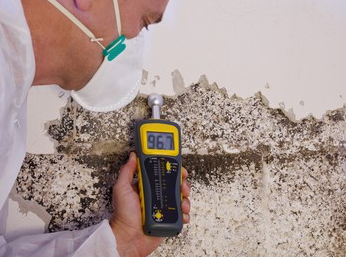
What happens if the mold comes back?
Firstly, our initial step would be to thoroughly investigate the cause behind the issue. It’s a rare occurrence, as we have encountered this problem only a handful of times across all the locations we have treated.
Upon investigation, we discovered that every instance of mold recurrence was attributed to a new leak, such as a broken pipe, a roof or skylight leak, or a malfunctioning A/C system. In such cases, we would promptly revisit the site, thoroughly assess the situation to ensure everything is in order, and take the necessary steps to address the issue and make it able to get your home mold-free once again

I was told they have to tear it out. Is that true?
Frequently, individuals hear from remediation companies or inspectors that the only solution to handle a mold situation is to tear the whole place apart and take down walls. However, this is not always true. Often, mold inspectors may suggest such drastic measures because that is the only method they are familiar with, as that is what they have been taught. Similarly, remediators may recommend such approaches because that is what they are accustomed to doing.
Fortunately, there are now many inspectors who offer multiple options on their reports. They are aware that there are alternative solutions available and therefore provide the choice of different methods to address the mold issue. This allows individuals to have more flexibility in deciding how to remediate the mold problem, rather than being limited to only one approach.
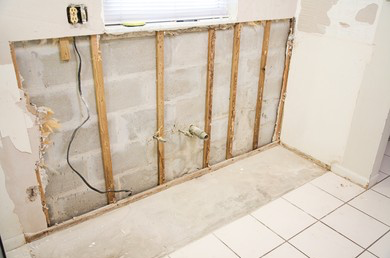
I only have one little spot of mold. Is the Nano Purification process right for me?
That’s an excellent question, and there are several ways to approach handling mold. Let’s explore a few options:
One method is to spray toxic chemicals on the affected spot and clean it off. However, this approach may actually spread the mold further, exacerbating the problem.
Another option is to rip out the affected area and hope that it resolves the issue without needing to remove more. However, this approach can be invasive and may not fully address the underlying problem.
A more effective solution is to use the Nano Purification Process, which eliminates the need for tearing out walls or spreading mold. This process focuses on sterilization and purification throughout the entire home, ensuring a clean and healthy environment to live in.
It’s important to consider your ultimate goal when dealing with mold. If you simply want to address a visible spot on the wall, there are multiple methods available. However, if you’re concerned about the overall health and safety of your living environment, the Nano Purification Process is designed to fully handle the mold issue, including airborne mold spores that can pose health risks. By opting for this process, you can ensure a clean, safe, and healthy living environment for you and your family.

Can you treat an automobile?
We are frequently sought after by auto dealerships for our expertise in treating cars. Many dealerships rely on us for warranty work, especially when it comes to addressing severe mold problems that require stripping the car down to bare metal. This process can be labor-intensive and costly, involving replacement of interior components.
However, with our Nano Purification process, we can effectively tackle mold issues in a car in just about an hour. This means that dealerships no longer need to strip the car down or put their technicians at risk of working in a mold-contaminated environment. Our process eliminates the mold smell and turns visible mold into a white ash that easily brushes off. After our treatment, the car simply needs to be sent for detailing before returning it to the owner.
Not only do auto dealerships benefit from our services, but classic car owners also appreciate our process. Working on classic cars can be expensive, and dealing with mold issues can be time-consuming and extensive. Our solution provides a convenient and efficient way to handle mold problems in classic cars, making it a preferred option for car owners.
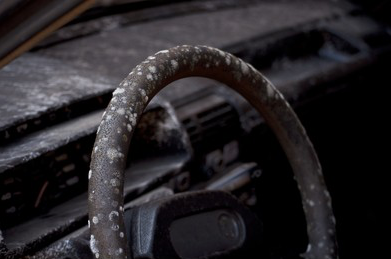
Can you treat my yacht?
Certainly. We often receive referrals from other yacht captions due to the excellent results of our process. It’s particularly well-suited for working on yachts and large boats due to their enclosed nature, which allows for highly effective treatment. Unlike houses, boats are typically airtight, making our process highly efficient.
We understand that captains may have concerns about potential damage to wood trim, access to engine rooms, and furniture. Rest assured, our process is safe for all materials and can reach all areas, including engine rooms, without causing any harm.

Will your process get rid of the smell or odor in my house?
Smart Nano Purification: Effectively Eliminate Mold Odors and More
The Smart Nano Purification Process is an advanced solution designed to eliminate mold-related odors and the harmful mycotoxins behind them. These mycotoxins are toxins released by mold as it breaks down the materials it grows on. By targeting the mold and neutralizing these toxins, our process not only removes the mold but also eliminates the associated health risks for both humans and animals.
Eliminating Odors from Mold and Water Damage
In addition to removing mold odors, the Smart Nano Purification process is highly effective in addressing odors caused by other sources, such as leaks and water damage. In many cases, our process successfully eliminates these odors, ensuring a fresh-smelling space. However, while the process has a high success rate, there may be rare instances where odors unrelated to mold or other materials persist, and our process may or may not resolve them.
More Than Just Mold Odors
The Smart Nano Purification Process is also effective in neutralizing odors from pets and smoking. With its cutting-edge technology, it can freshen your home by eliminating unwanted smells, creating a clean and pleasant environment.
.
What types of facilities is Smart Nano Purification certified to be used in?
With our cutting-edge Smart Nano Purification technology, we have successfully treated a wide range of spaces, including hospitals, government facilities, yachts, cars, planes, and residential homes. No matter what you need purified, we’ve likely worked on it and treated it. Plus, our solution is fully EPA certified for use in any type of environment and on various surfaces, making it suitable for virtually any location.

What is the difference between Smart Nano Purification and Fogging?
The Nano Purification process employs only the highest quality, non-toxic chemicals that are approved for use in the medical industry and certified by the EPA to be non-toxic. While these chemicals may be expensive, they ensure that the purification process is safe and environmentally friendly.
One of the key advantages of Nano Purification is its ability to reach even the tiniest crevices, thanks to the minute size of the particles used. These particles are much smaller than mold spores, allowing them to penetrate walls. When the Smart Nano Purification is used, the liquid is transformed into microscopic droplets that are equivalent to a gas. In fact, if you were to place your hand in front of the Nano Purifier machine, it would remain dry as the particles are so small that they do not physically stick to surfaces, eliminating the need for wiping or leaving behind any residues.
On the other hand, fogging, which uses larger particles that are about 10 to 15 times the size of mold spores, relies on toxic chemicals called fungicides. Due to their larger size, these droplets of water can only cling to mold spores in the air, causing them to fall to the ground. However, they are not able to reach the nooks and crannies where mold can hide, and therefore cannot effectively eliminate mold growth. In addition, the mold spores may resurface again once the fogging treatment wears off, resulting in temporary relief but not addressing the root cause of the mold problem.
It is worth noting that fogging is not considered effective for handling mold problems, as it merely pulls down mold spores from the air to the ground without addressing the underlying issue. In contrast, Nano Purification ensures thorough and long-lasting purification without leaving any residues or harmful effects, making it a superior choice for safe and effective mold remediation.

What is Smart Nano Purification?
Smart Nano purification is a process of being able to take products and break them down to a microscopic particle. That’s a fraction of the size of a mold spore, bacteria or a virus in order to get it to be able to spread it throughout a home and have it penetrate through all the materials and completely destroy all the molds, bacteria and viruses in the home.
The best analogy between nano purification and anything else would be getting a house tented for termites. They are working with a gas and as tiny, microscopic particle, they don’t have to rip the walls open to get to the termites.
Nano purification is a cutting-edge process that involves breaking down products into microscopic particles, much smaller than mold spores, bacteria, or viruses. These particles are then dispersed throughout a home, penetrating all materials to effectively eradicate mold, bacteria, and viruses.
An *apt analogy to understand nano purification is tenting a house for termites, where a gas is used to reach the pests without having to tear down walls. Similarly, nano purification works without the need for toxic chemicals or home tenting, as the tiny particles can quickly and efficiently eliminate mold, viruses, and bacteria. These particles, at the size of a gas, easily penetrate through various materials in the home, making the process highly effective and efficient.
*The word “apt” is an adjective that is used to describe something as appropriate, fitting, or suitable for a particular purpose or circumstance. It can also refer to someone who is skilled or inclined to do something well.

What are the actual chemicals used?
The chemicals utilized in Nano purification are a blend of hydrogen peroxide and acetic acid, which is similar to the acid found in lemons and oranges but in a more potent form. These chemicals are uncomplicated and do not contain any harmful substances like bleach. Moreover, they are completely non-toxic and safe to use.

Should I cover the furniture and clothes?
With the Nano purification process, minimal preparation is needed. There is no need to worry about covering furniture, clothing, paintings, or any other belongings. Your food and other household items are safe within the home and do not require any special precautions or covering.
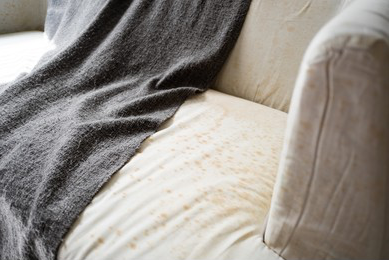
Is it safe for animals?
The Nano purification products we offer are entirely safe for animals. In fact, we have successfully used them in veterinarian hospitals. Our product has received certification from the Environmental Protection Agency (EPA) for being safe for both pets and families.

What is the level of safety of the chemical used in your process, particularly in the context of restaurants that undergo food and health inspections?
The Nano purification process is a simple and reliable method that is absolutely safe for food, food surfaces, and all areas within a restaurant. Our products are fully EPA certified, guaranteeing their non-toxicity. One of the greatest benefits of this process is its ability to effectively handle mold, sterilize surfaces, and eliminate the need for extensive post-treatment wiping, as it leaves no residue behind.
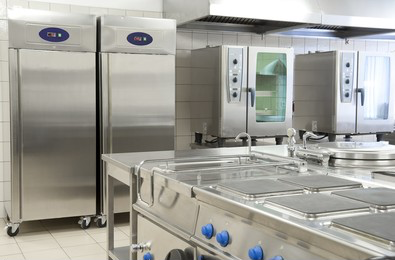
How Much Does it Cost?
In order to provide an accurate quote for the Nano purification process, we conduct a comprehensive in-person estimate. During this process, we gather essential data to ensure an accurate estimation, which includes:
- Determining the size of the area that requires treatment.
- Assessing the presence and size of the attic (for residential properties).
- Examining the space above drop ceilings (for commercial properties).
- Checking for crawl spaces.
- Evaluating the size and attachment status of any garages.
- Assessing the extent of visible mold.
- Identifying the number of AC systems on the property.
Additionally, during our visit, we conduct a thorough inspection of the property to determine the root cause of the mold issue. This enables us to address it effectively and appropriately.
In our pricing estimate, we also include the cost of engaging a third-party Mold Inspection Company to conduct testing upon completion of our work. Our aim is to provide a transparent and all-inclusive estimate, so that there are no unexpected charges when you receive the final invoice.

How long does it take?
The Nano purification process is incredibly swift, taking just over three hours from start to finish. Once the setup is complete and the treatment is running, the actual process time is only two hours. Afterward, there is an additional hour for the home to air out, making it a total of approximately four hours before you can return home.
If you find that the smell is still a bit too potent when you return, simply allow it an additional hour to dissipate. It’s important to note that the solution used in the process is non-toxic and safe for you, though it may be strong on the eyes at full strength. The intensity of the smell depends on your sensitivity, so if it feels overwhelming, just give it more time to subside.

How safe is it, is it nontoxic and EPA approved?
Our Nano purification process employs products that are EPA certified for use in both homes and businesses, with a 100% certification rate. These products are safe to use on all types of surfaces. If you require documentation for your HR department or any other purposes, we can readily provide it upon request. It’s important to note that all our documentation is considered public records.

How does it get behind my walls?
People often wonder how we can treat the inside of walls without actually opening them up. The secret lies in the size of the particles we use. The magic behind our process is that we work with particles that are incredibly small, even smaller than mold spores.
Now, let’s flip the question around and consider how mold spores actually get inside walls in the first place. Mold spores are microscopic particles that are so tiny, you can fit billions of them on the head of a pin. Due to their small size, they are able to pass through porous materials like sheetrock, wood, and other building materials, which is how they end up inside walls.
Our nano purification process takes our solution and converts it into particles that are 10 times smaller than the size of mold spores. This means that just like mold spores can penetrate walls, our solution can also reach inside walls to destroy mold. It’s a highly scientific process that involves working with particles that are minute in size.
To put it in perspective, a nanometer is 1000 times smaller than a micrometer, which is the unit of measurement for micro-sized particles. So our nanoparticles are incredibly small and allow us to effectively treat mold inside walls without having to open them up.
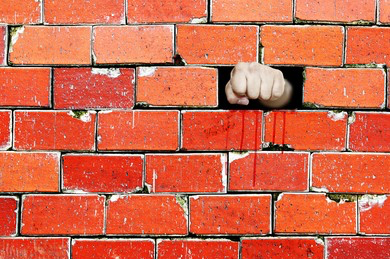
How does Smart Nano Purification compare to other remediation methods?
The nano purification process surpasses other methods in terms of speed and simplicity. Unlike other processes such as fogging, which only targets the air, our nano purification process can penetrate through materials, including walls, to effectively eliminate mold. This means we can tackle the entire mold problem, not just spot-treatments on walls. With our process, we guarantee 100% results as we are able to address 100% of the mold issue, providing a comprehensive solution to mold remediation.
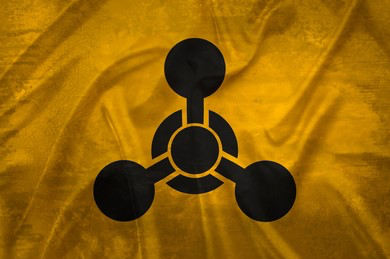
What is your guarantee?
We assure you that we are committed to effectively addressing any mold problem you may have. Our process includes engaging a reputable mold inspection company to conduct thorough testing of your property after each treatment, ensuring that the issue is fully resolved. We stand by our guarantee, which is based on the air quality assessment carried out by a third-party inspection company. This provides you with the confidence of a comprehensive solution.
In the unlikely event that the third-party inspection does not pass, we will promptly revisit your property to identify and rectify any remaining concerns. Our team is highly skilled in identifying moisture sources, but sometimes hidden issues may arise. If we are unable to identify the problem, we may request the assistance of a leak detection company to pinpoint the source of moisture. Once the moisture issue is resolved, we will re-treat your home at no additional cost.
Please note that we consider the job to be complete only when we receive a passing air quality assessment from a reputable third-party inspection company. Your satisfaction and the health of your home are our top priorities.

Is Mold Experts USA licensed and insured for mold remediation?
Absolutely! We possess a complete license and insurance coverage. If you require any documentation to verify this, please do not hesitate to contact us. We are more than willing to provide you with the necessary information.
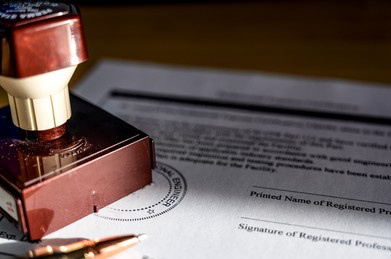
What is the earliest possible timeline for treating my home?
Due to our efficient mold treatment process, we are able to promptly address mold issues and provide fast solutions to our customers. We understand that living with mold is undesirable, and we strive to minimize the time our customers have to endure it. However, in some cases where there are ongoing leaks or moisture issues in the home, additional time may be required to fix and dry up these issues before treatment can commence. This may result in a slight delay of a week or two for the overall project timeline. Nevertheless, if the house is ready for treatment, we can typically schedule it within the week.

How much experience do you have?
Our team boasts extensive expertise accumulated over a decade of experience. With a wealth of practical knowledge gained from working on countless properties, including hospitals, vehicles, yachts, as well as various sizes of houses, we have successfully handled diverse situations with precision and professionalism. Our track record includes thousands of properties treated and managed, showcasing our unparalleled depth of experience.

Can I get a few references?
Please feel free to visit our website and browse through the numerous testimonials from satisfied customers. Due to privacy laws similar to those in the medical industry, we are unable to provide direct references from past clients in the mold industry. We deeply respect our clients’ privacy preferences, and if they do not wish to have their information disclosed, we cannot release it. Just as we would honor your privacy, we uphold the same level of confidentiality for all our clients. However, we do encourage our clients to leave reviews if they are comfortable sharing their experience with others and are okay with disclosing that they had a mold problem.

Do you work after hours and weekends?
Certainly! Occasionally, there is a need to accommodate business requirements, particularly in the case of commercial enterprises. We acknowledge the necessity of keeping the doors open during business hours, and as such, we are willing to collaborate with you on scheduling arrangements.

How long does an insurance claim take?
Expediting Your Mold Remediation While You Wait for Insurance Approval
Insurance claims can take anywhere from a few weeks to several months to process fully. However, when it comes to your mold situation, you don’t have to wait for the entire claim to be completed.
How We Expedite the Process
Our main priority is ensuring your claim gets approved, which typically takes a few days to a few weeks. Once your claim is approved, we’ll act quickly to begin addressing your mold issue, ensuring minimal disruption to your life.
Why You Don’t Have to Wait
We understand the urgency of mold problems, and we strive to move the process forward as quickly as possible. Once your claim is approved, we’ll expedite the necessary steps to remediate the mold in your home, so you can focus on what matters most.

Can I use insurance?
Certainly, insurance is a common part of our routine.
Insurance typically covers mold problems that arise from incidents such as leaks in walls, roof leaks, or A/C pan leaks. However, if the issue is a result of inadequate maintenance on your part, insurance may not cover it.
Feel free to contact us if you have any questions, and we’ll be happy to provide guidance and assistance.

How do I know if my mold problem will be covered by insurance?
Determining whether your mold problem is covered by your insurance policy is not a simple Yes or No answer. It depends on the cause of the mold issue and the specific coverage of your policy.
To ensure that you receive proper guidance, we highly recommend working with a professional who specializes in handling mold-related insurance claims, such as a Public Adjuster. We keep a list of trusted Public Adjusters on hand because we understand that some insurance companies may try to avoid honoring claims or providing adequate coverage for mold issues.
You can also reach out to us for assistance, as we have a basic understanding of what is typically covered and what is not. Our goal is to ensure that your claim is processed smoothly and quickly, and that you are satisfied with the outcome. Contact us for help and we will be happy to connect you with a reputable Public Adjuster to assist you further.

Coming Soon
Coming Soon

Why do real estate agents like us so much?
Efficient Mold Remediation for Real Estate Transactions
Real estate agents often turn to us for help with mold issues that can jeopardize the sale of a home. Traditionally, mold remediation can be time-consuming and expensive, leading to lost deals. However, our efficient process typically takes just half a day to complete, ensuring a quick resolution.
Why Real Estate Agents Choose Us
Our streamlined approach allows for fast mold remediation, making it easier to close deals on time. In many cases, the cost of our services can be covered through escrow, relieving sellers from paying upfront. Once the sale is finalized, we promptly handle the mold issue and process the payment through escrow.

What type of documentation is provided to human resources to prove my employees are safe?
The most comprehensive form of documentation to ensure complete resolution of a mold issue is to engage a third-party mold inspector who conducts thorough testing of the premises. We prioritize this step in every job we undertake to ensure the well-being of everyone involved. By obtaining comprehensive documentation, we aim to provide you with the necessary evidence for any future reference, should any mold-related concerns arise regarding the building in question.


